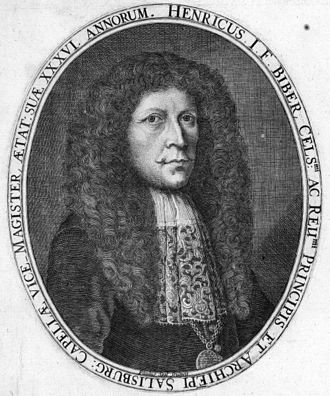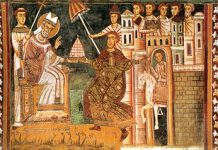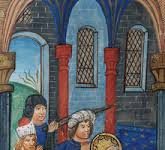
We will post our Sunday musical selection a day early this week, as there is a Marian theme, fitting for this Saturday in August, the feast of Pope Saint Pius X – who restored the beauty of chant to liturgical worship – and what would be the vigil of Our Lady’s Queenship.
Heinrich Ignaz Franz Biber (1644 – 1704) was a baroque composer prolific in more ways than one. He and his wife, Maria Weiss, had eleven children, four of whom survived to adulthood. As well, Biber wrote numerous works, Masses, requiems, motets, one, Missa Sancti Henrici, for his daughter’s entrance into religious life. But he is most famous for his series of fifteen Rosary sonatas for violin and continuo, also called the Mystery sonatas, composed around 1676. They were meant to accompany the public recitation of the Rosary, as Catholics meditated on the mysteries of our Saviour’s life. I, for one, would be too distracted by the music, which, like the pieces themselves, I discovered serendipitously, listening to some streamed music. These were so difficult to play, they were lost for three hundred years, until found in 1905. The technical skill to play them was very rare, some say non-existent, in the 17th century (which I find difficult to believe, looking at some of Bach’s scores). Biber used scordatura, different tunings of the strings of the violin, to change its colour and tone, so the player must not only stretch his finger for many of these difficult arpeggios, filled with double-stops (follow along the rolling score, and even try to play, if thou dare!), but the player also hears notes different from what he is used to from normal fingering.
All in all, endless hours of practice, and a gift, music worthy of a heavenly King and Queen. Here is the first of the fifteen, but the rest may all be found quite easily:










